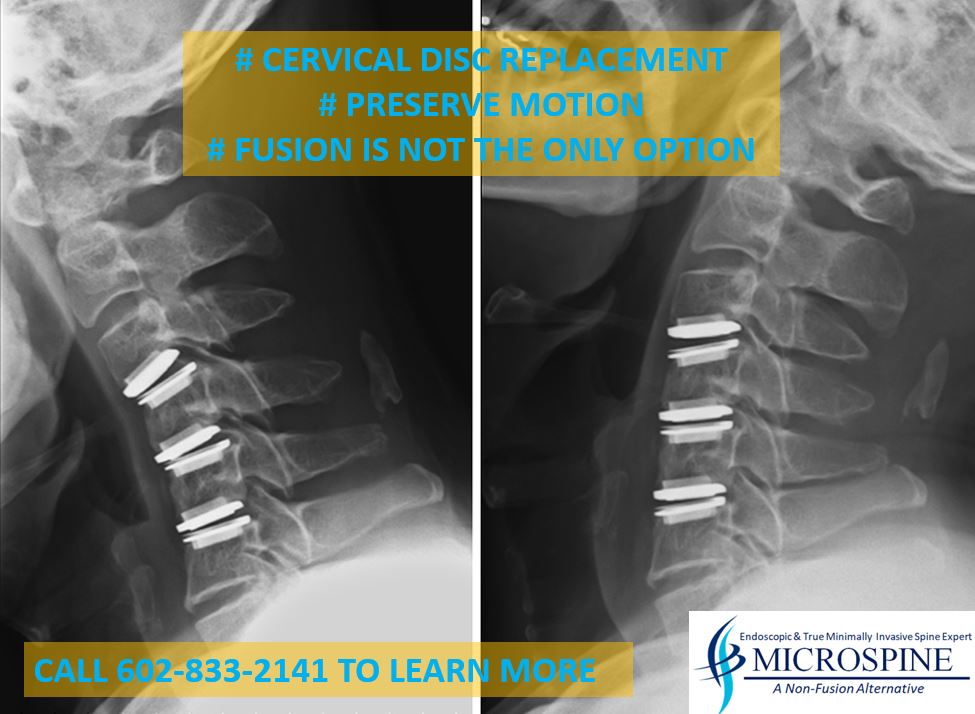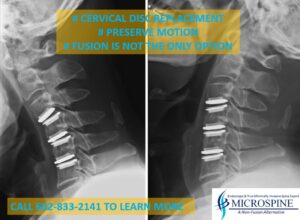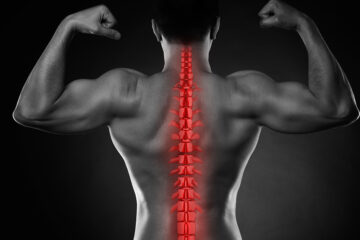When To Consider Spinal Disc Replacement?


Navigating the Path to Pain-Free Living: Spinal Disc Replacement vs. Spinal Fusion
When it comes to spine health, few decisions are as pivotal as choosing the right treatment for chronic back pain caused by degenerative disc disease or other spinal conditions. Two prevalent surgical options, spinal disc replacement and spinal fusion, offer distinct advantages. In this discussion, we will explore the benefits of each procedure to guide patients towards a pain-free, active life.
Understanding Spinal Disc Replacement
Spinal disc replacement, also known as arthroplasty, involves removing a damaged intervertebral disc and replacing it with an artificial one. The goal is to preserve the natural motion of the spine while relieving pain and restoring function.
Benefits of Spinal Disc Replacement:
- Motion Preservation: Unlike spinal fusion, which immobilizes the affected spinal segment, disc replacement maintains the natural movement of the spine. This can lead to a more natural feel post-surgery.
- Reduced Risk of Adjacent Segment Degeneration: By preserving motion, disc replacement may lessen the strain on adjacent discs, reducing the likelihood of further degenerative changes.
- Quicker Recovery: Patients often experience a faster recovery and can return to their daily activities sooner compared to those undergoing spinal fusion.
- Improved Outcomes: Studies suggest that disc replacement may result in better long-term outcomes in terms of pain relief and functional improvement.
Understanding Spinal Fusion
Spinal fusion, on the other hand, involves fusing two or more vertebrae together to eliminate movement at a painful segment, thus reducing pain and providing stability.
Benefits of Spinal Fusion:
- Pain Relief: Spinal fusion is highly effective in eliminating pain caused by motion at the affected vertebral segment.
- Stability: By fusing the vertebrae, spinal fusion provides stability, which is particularly beneficial for patients with spinal deformities, fractures, or instability.
- Proven Track Record: Spinal fusion has been performed for many years and has a well-established track record of success in relieving pain and improving function.
- Versatility: This procedure can address a wide range of spinal conditions, from degenerative disc disease to spinal stenosis and scoliosis.
Comparing the Procedures
While both procedures aim to alleviate pain and improve function, the choice between spinal disc replacement and spinal fusion depends on various factors, including the patient’s age, overall health, and specific spinal condition.
Factors to Consider:
- Age and Activity Level: Younger, more active patients may benefit more from disc replacement due to its motion-preserving nature. In contrast, older patients or those with significant spinal instability may find spinal fusion more suitable.
- Location of the Affected Disc: Disc replacement is typically performed in the cervical (neck) or lumbar (lower back) regions, while spinal fusion can be performed in any region of the spine.
- Extent of Degeneration: Patients with extensive degeneration or multiple affected discs may be better candidates for spinal fusion.
- Surgeon’s Expertise: The choice of procedure also depends on the surgeon’s experience and expertise in performing each type of surgery.
Patient Testimonials
“Choosing disc replacement was the best decision I made for my back. The recovery was swift, and I can move freely without pain. It feels like I got my life back!” — Sarah, 45
“Spinal fusion gave me the stability I needed. The pain is gone, and I can finally enjoy activities with my grandchildren without worry.” — John, 62
Conclusion
Both spinal disc replacement and spinal fusion offer significant benefits for individuals suffering from chronic back pain. The key is to work closely with a spine specialist to determine the best course of action based on your unique circumstances. By understanding the advantages of each procedure, you can make an informed decision and take a crucial step toward a pain-free, active life.



